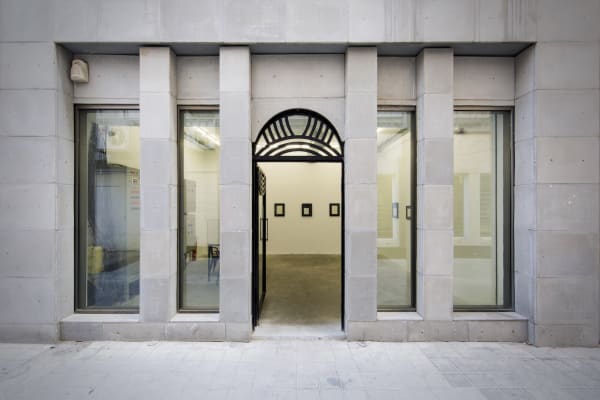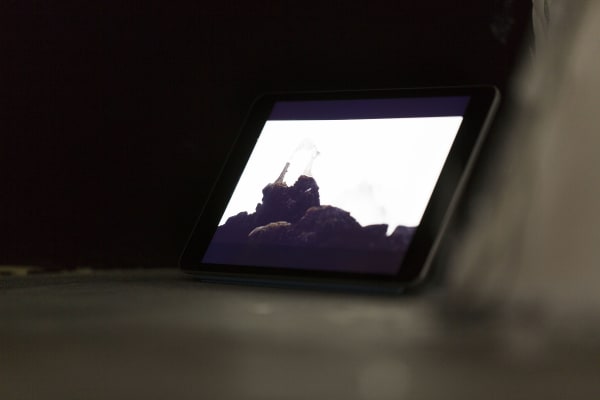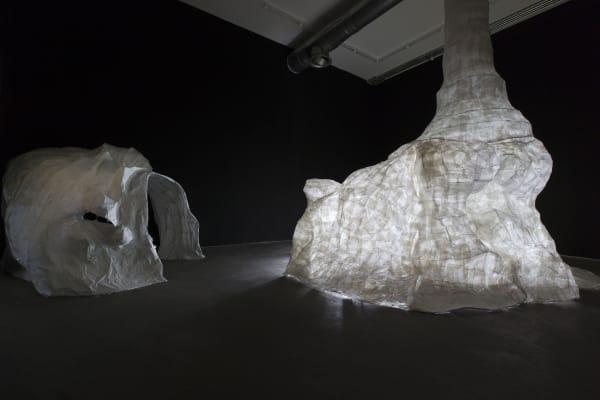Interactive Installation and Video Presentation by Taba Fajrak and Shokoufeh Khoramroodi
-

The Future is Bright
Canvas March 31, 2021In it's latest issue, 'The Future is Bright', Canvas magazine highlighted some of the 'Rising Stars at Art Dubai 2021', including Dastan's Taba & Shooki....Read more -

"HORMOZ HEMATIAN & ASHKAN ZAHRAEI, Electric Room, art under high tension"
Anahita's Eye December 11, 2018Anahita's Eye has recently published an interview with Hormoz Hematian and Ashkan Zahraei discussing the 50-project long program of Electric Room (in EN, FR, DE)....Read more -

"Shifting Perspective from Art to Research"
Tosee Irani October 21, 2018Tosee Irani have recently published an article by Alireza Bakhshi Ostowar on the Electric Room (in Farsi). Click here to read it in full.Read more -

"Experimental Art Can Stand Independently"
Honaronline October 14, 2018Honaronline have recently published an interview with Ashkan Zahraei discussing The Electric Room project (in Farsi). Click here to read it in full.Read more
Dastan is pleased to announce an interactive installation and video presentation by Taba Fajrak and Shokoufeh Khoramroodi at Electric Room. The show will be open to public view from December 22 to 27, 2017. The presentation consists of a large interactive installation, an animation piece, a recorded performance, and light design.
The title of the presentation is created by combining the two words ‘meme’ and ‘brain’ and is a play on the word ‘membrane’. The term ‘meme’, which is rooted in the Greek word ‘mimema’ (lit. ‘imitated’), was introduced by the British evolutionary biologist Richard Dawkins* (b. 1941), and refers to ideas, behaviors, or styles that spread from person to person within a culture. On the other hand, the function of the brain is to plan and apply ‘centralized control’ over other body organs.
Talking on the origins of the project, Taba Fajrak explains: “The very first cell is presumed to have arisen by the enclosure of a self-replicating structure (the RNA molecule) in a membrane** —the first thing a cell produces to become a cell, is its membrane; its territory. As a performer, my means of expression is my body, and a rule of the game is ‘enclosing’ or giving form to this medium. I need this enclosure to be light and flexible and always ready to be destroyed and rebuilt —ephemeral, like performance itself.”
Based on this idea, two years ago she approached Shokoufeh Khoramroodi, a painter and drawing artist, to collaborate on the project, as “two is better than one”. Shokoufeh suggested the membrane be made out of paper, as “it has almost all the characteristics required for putting the idea together, with an added bonus: it serves as a tabula rasa that can itself be used as a means of expression —a canvas.” Taking small pieces of thin paper, the artists started to “arise, replicate and produce” leading to a process of “territorialization”.
In addition to the large paper structure, the presentation includes an animation piece and a recorded performance, with the two of these creating dialogs inside and between them. The animation, taking inspirations and references from ‘Wanderer above the Sea of Fog’ (1818) by Caspar David Friedrich (German, 1774-1840), and David Hockney’s (British, b. 1937) drawings in ‘Six Fairy Tales from Brothers Grimm***’, ‘The Princess Searching’ (1969) and ‘The Older Rapunzel’ (1969), is replicated in a recorded performance of the two artists in a defamiliarized setting. Each of the two videos can be viewed by the audience inside the membrane’s two sections, the igloo-like larger part where the viewer can sit comfortably, and a narrow hallway, stopping at a small door, leading to the ‘world outside the membrane’.
* Dawkins, Richard. “The Selfish Gene”. Oxford University Press. 1976
** The National Center for Biotechnology Information (NCBI) Glossary
*** Hockeny, David. “Six Fairy Tales from Brothers Grimm”. London: Royal Academy Books. 1970.
Taba Fajrak (b. 1989, Tehran, Iran) is a performance artist, dancer, and researcher. She is a graduate of English Language and Literature from the University of Tehran. She continued her studies in nonsense literature and non-verbal performance, obtaining a master’s degree in English Literature from Shahid Beheshti University (Tehran). Her pieces have been featured in several exhibitions and public performances. Taba frequently works in collaboration with other artists from a range of different disciplines.
Shokoufeh Khoramroodi (b. 1988, Hamedan, Iran) studied Painting at the Faculty of Arts & Architecture (Azad University, Tehran) and Yazd Faculty of Art & Architecture. Focusing mostly on drawing over her career, more recently she has experimented in animation and multidisciplinary work. Shokoufeh’s drawings, paintings and animation pieces have been featured in more than ten group exhibitions, as well as a number of collaborative projects.








